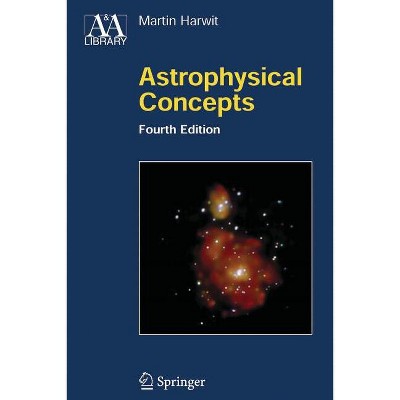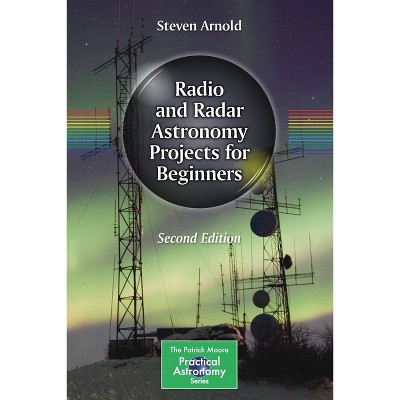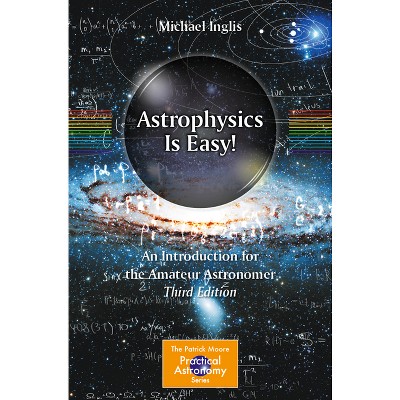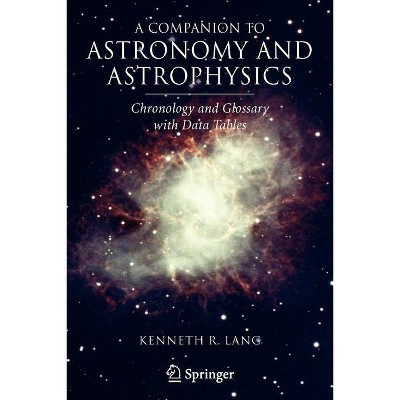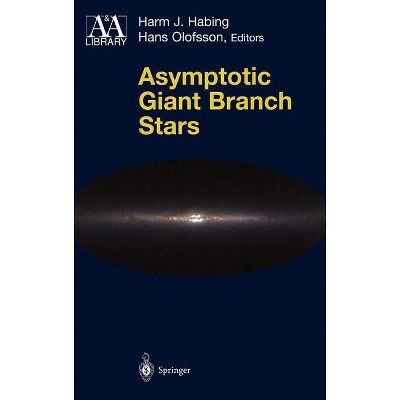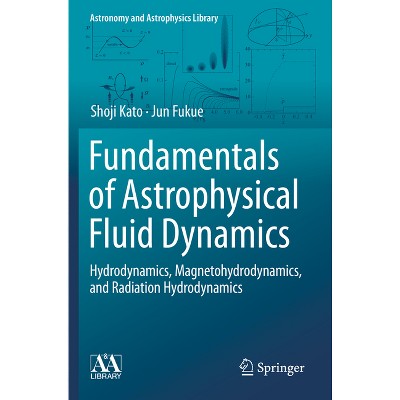Stellar Interiors - (Astronomy and Astrophysics Library) 2nd Edition by Carl J Hansen & Steven D Kawaler & Virginia Trimble (Paperback)

About this item
Highlights
- Some praise for the previous edition: "Besides being well-written, it presents some fresh perspectives . . . Well-designed . . . for students interested in astronomy and space, planetary, and earth sciences . . . It can also provide a readable introduction to the subject for scientists working in related areas . . ."-Physics Today Designed for beginners in stellar physics, this book introduces the fundamentals of stellar structure and evolution.
- Author(s): Carl J Hansen & Steven D Kawaler & Virginia Trimble
- 526 Pages
- Science, Astronomy
- Series Name: Astronomy and Astrophysics Library
Description
Book Synopsis
Some praise for the previous edition:
"Besides being well-written, it presents some fresh perspectives . . . Well-designed . . . for students interested in astronomy and space, planetary, and earth sciences . . . It can also provide a readable introduction to the subject for scientists working in related areas . . ."
-Physics Today
Designed for beginners in stellar physics, this book introduces the fundamentals of stellar structure and evolution. In emphasizing the general picture of the life cycles of stars and the physics responsible, Stellar Interiors also allows prospective specialists a taste of many of the detailed aspects of this mature discipline. The authors develop a solid foundation in important theory that is often overlooked in typical courses, yet steer clear of extraneous intensive mathematics and physics. The new edition has been updated throughout to incorporate new observational and theoretical insights, and the programs have been updated to modern standards.
From the Back Cover
This text, updated and expanded from the first edition, is designed for beginning students of stellar physics, and introduces the fundamentals of stellar structure and evolution. In emphasizing the general picture of the life cycles of stars and the physics responsible, it also allows prospective specialists a taste of many of the detailed aspects of this mature discipline. The authors develop a solid foundation in important theory that is often overlooked in typical courses yet steer clear of extraneous intensive mathematics and physics.
Topics include:
*The life stories of stars explained by observation and theory
*Equations of state of stellar material
*Basic radiative transfer and stellar spectra
*Stellar energy sources and nucleosynthesis
*Phenomenological approaches to convection
*Numerical techniques for computation of stellar evolution
Keeping pace with recent developments, the authors incorporate important elements such as asteroseismology, and the effects of rotation and magnetic fields.
This edition contains an extensive set of exercises that supplement and expand on the text.
About the authors:
Carl Hansen is Professor Emeritus of Astrophysical and Planetary Sciences, and Fellow Adjoint of JILA, at the University of Colorado, Boulder.
Steve Kawaler is Professor of Astrophysics at Iowa State University, Ames, Iowa.
Virginia Trimble is Professor of Physics at the University of California, Irvine, and Visiting Professor of Astronomy at the University of Maryland, College Park.
Review Quotes
From the reviews of the second edition:
"This updated edition will be welcomed by the scientific community. ... gives an excellent general introduction to the subject. ...This book is especially suited for students in astrophysics and astronomy at the master level or starting a Ph.D. thesis, but also for post-graduate science students looking to enlarge their horizon." (Cyriel Wagemans, Physicalia, Vol. 57(3), 2005)
"This book is aimed at senior undergraduate or early graduate students in astronomy ... . It provides a broad overview of the physical basics of stellar structure and evolution sufficient to whet the appetite of the student sufficiently ... . Recommended, yes, but only for serious students of stellar physics, as light reading, or a pretty picture book, it is not." (Roger Feasey, Journal of the Auckland Astronomical Society AAS, February, 2005)






